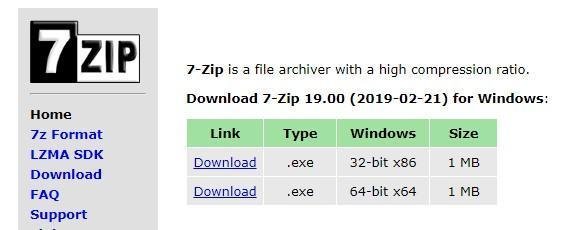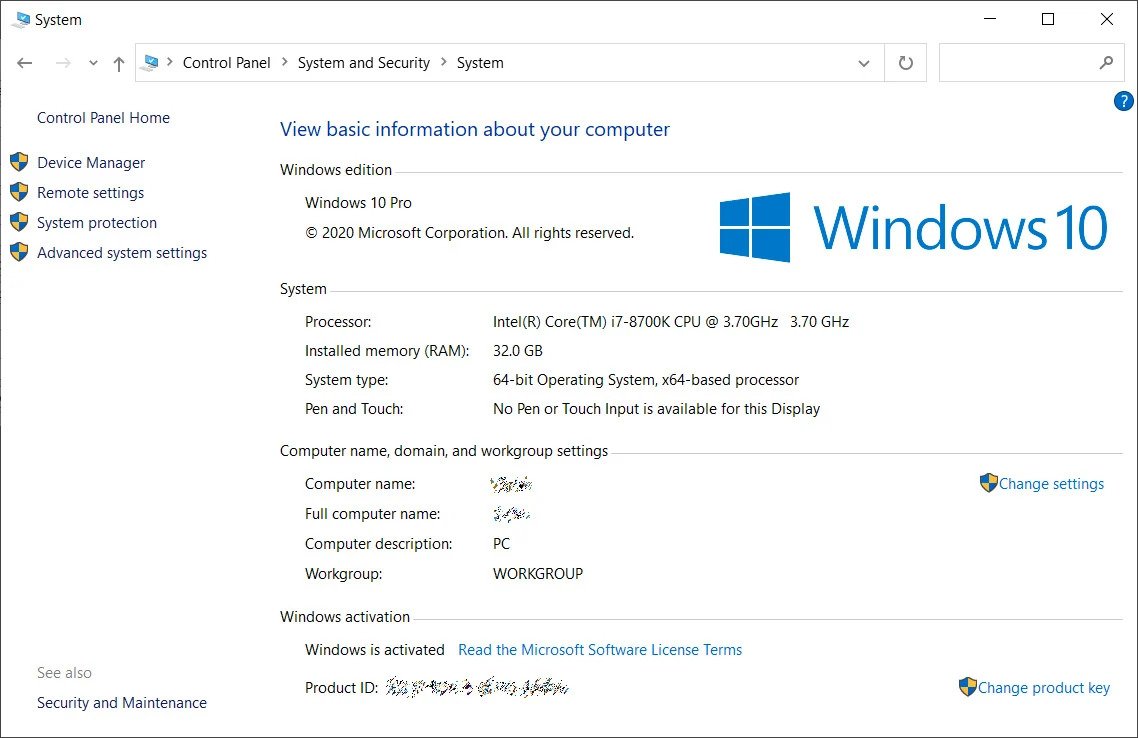What is 32-bit and 64-bit Windows and how are they different? What version do you have? Can you change the architecture?

When deciding which version of Windows to order with your new computer, focus first on the Home or Pro versions. Although this separation actually refers to different things, there is another factor that separates versions of Windows: the 32-bit or 64-bit system.
You may have heard the terms 32-bit and 64-bit, but most people do not really understand them. Let's take a look at where these names come from and what they mean in Windows and other operating systems.
What does a 32-bit or 64-bit computer do?

Whether your computer architecture is 32-bit or 64-bit depends on the processor (CPU) inside your computer and the host motherboard.
There are three levels of hardware and software, each of which can be 32-bit or 64-bit: the CPU, the operating system, and the programs. CPU type affects everything else, so if you have a 32-bit CPU, you can not install Windows 64-bit. And in Windows 32 bit, you can not install 64 bit programs.
64-bit CPUs are the dominant architecture these days. 32 bit CPUs are outdated in today's market so if you don't have one old computer, chances are your processor is 64 bit.
64-bit processors are exponentially more powerful than their 32-bit predecessors because they can hold and process much more information. To understand the size of the differences between 32-bit and 64-bit, you need to understand how we measure in a binary system. Unlike our decimal system, which has 10 possible digits per position, binary has only two: 0 or 1.
Thus, a 32 bit number has 2 ^ 32 possible addresses or a total of 4.294.967.296. In contrast, the capacity of a 64 bit number is 2 ^ 64 or a total of 18.446.744.073.709.551.616. Comparing about 4 billion bytes (about 4 gigabytes) with about 18 billion bytes (about 18 billion gigabytes or 16 exabytes) shows the huge difference.
You can choose between the 32-bit and 64-bit versions of Windows provided by Microsoft when downloading and installing the operating system. Windows 11 is only available in 64-bit. Windows 10 is available in both formats.
How Windows differs between 32-bit and 64-bit versions
If you use a 64-bit processor, you must also use a 64-bit version of Windows to take advantage of its enhanced capabilities. 32-bit versions of Windows run on 64-bit processors, but are limited to what the 32-bit operating system can do.

You can not install a 64-bit version of Windows on a 32-bit processor. However, Windows 64-bit is compatible with 32-bit software, as we will see below.
There are two important parts that you will notice as the difference between 32-bit and 64-bit in Windows. One is that a 32-bit version of Windows can only use up to 4 GB RAM (or less), no matter how much you have installed on your computer. Therefore, if you have 16 GB of RAM in your computer, and it is running Windows 32-bit, it will not actually use more than 4 GB.

The other place you'll find a difference is the Program Files folder. On a 32-bit version of Windows, applications will be installed in the single Program Files folder. 64-bit systems have one additional envelope Program Files (x86) for 32 bit software. This is because writing software for a 32-bit architecture is very different from writing software for a 64-bit system.
When programs want to get some shared information, such as DLLs, they need to look in the right Program Files directory. This is why Windows keeps them separate. A 32-bit program would have no idea what to do with a 64-bit DLL.
Note that in Windows, 32-bit is also referred to as x86 and 64-bit is also called x64.
Ancient versions of Windows, such as Windows 3.1, ran 16-bit software. 32-bit versions of Windows are compatible with these older programs. However, if you have a 64-bit machine, you can not run the old 16-bit software. You will need to configure a 32-bit operating system to run these old programs.
Additionally, Windows 64-bit requires 64-bit device drivers. If you have an older printer or something that only offers 32-bit drivers, it will not work on your modern 64-bit system.
Differences between 32-bit and 64-bit programs
When you get software you will see that it can exist in either 32-bit or 64-bit version. Some developers only provide one version (32-bit or 64-bit), sometimes letting you choose which one to download, and others automatically install the right version for you.
If you are running a 64-bit version of Windows, you should have 64-bit versions installed on your machine.

But do not worry if a vendor does not offer a 64-bit version, as the 32-bit version should work fine in most cases. For example, popular applications such as Discord and Spotify are only available in 32-bit.
64-bit software versions are unlikely to surprise you at high speeds. However, they take advantage of the increased security of the 64-bit architecture and can use more than 4 GB of RAM at a time. They are therefore often more stable and efficient than their 32-bit counterparts, especially for heavy software such as video editors.
Keep in mind links like Version ή Edition on vendor download pages to see if they offer a 64-bit version. Because 32-bit software works on every system, it may be the default for some vendors.
Of course, if you are using a 32-bit system, only 32-bit software will work for you.
Are you running 64-bit or 32-bit Windows?
Now that we have discussed the differences between the 32-bit and 64-bit versions of Windows, we can find out if you are using Windows 32-bit or 64-bit.
In Windows 10, right-click the Start button and select System. You can also browse on Settings> System> Information. Read under "Device Specifications".
Next to "System Type", Windows indicates whether your installation is 32-bit or 64-bit, as well as your processor architecture.

In Windows 7 and earlier, right-click Computer on the Start menu and select Properties. Use the shortcut Win+Pause to open this menu in any version of Windows. You will see the system type entry with the operating system and CPU architecture.
Both tables also list the RAM installed here. On a 32 bit system, this will mark something like 4 GB that can be used if you have more than 4 GB installed.

Can you upgrade Windows 32-bit to Windows 64-bit?
Your processor and operating system architectures must match. But if they don't, you might be able to upgrade. If you're running a 32-bit version of Windows 10 on a 64-bit processor, you can change architecture and upgrade to Windows 64-bit. But you will lose everything data your. You will essentially format your disk.
Those running the 32-bit version of Windows on a 32-bit processor cannot upgrade to 64-bit Windows. You will need to upgrade your CPU and motherboard or buy a new machine to take advantage of 64-bit. Every computer that is availables on the market now logically has a 64-bit processor and a 64-bit operating system. If you build your own computer, any modern processor you find for sale will only be 64-bit.
In conclusion
The 64-bit computer is now the only architecture sold on the market. The use of 64-bit systems did not become very popular until Windows 7 and 64-bit is now the standard for Windows 10. For Windows 11 it is one way.
4GB of RAM, which was unthinkable when CPUs were first designed, is still a workable amount of memory for light use. However, as component prices continue to fall, the machinelow-end devices continue to ship with more RAM. Ultimately, this makes 32-bit systems completely obsolete as they cannot use the excess memory.
Developers, in turn, are focusing on developing 64-bit software, which will be the standard for a long, long time.





